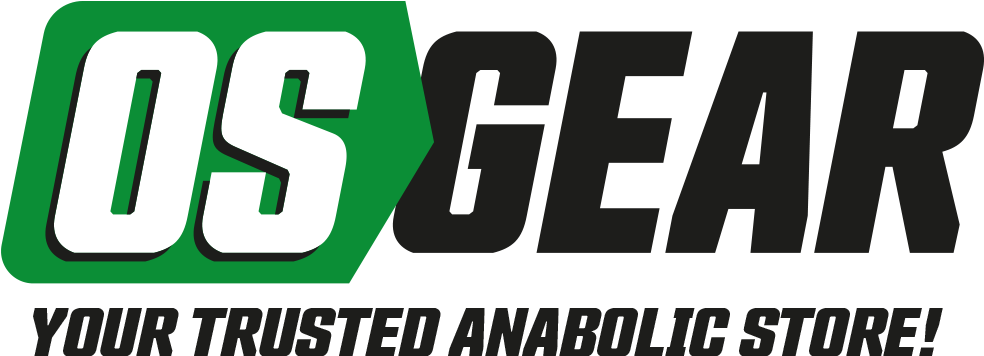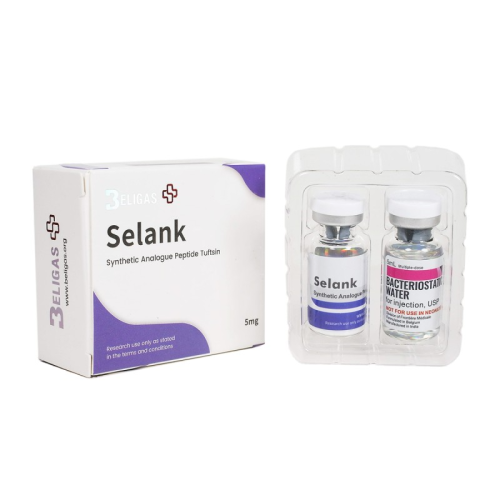CLASSIFICATION
Anxiolytic Peptide
ACNE
No
WATER RETENTION
No
HBR
No
HEPATOTOXICITY
No
AROMATIZATION
No
MANUFACTURER
Beligas
WAREHOUSE
International Warehouse 3
SUBSTANCE
Selank
,
The recent surge in biotechnology has paved the way for the exploration of novel biologically active substances, such as "cognitive enhancers" or "nootropics."
One notable compound is Selank, formerly referred to as “TP-7,” categorized as a synthetic peptide—a type of small, artificially created protein.
Selank is promoted as an "anti-anxiety" agent and is claimed to enhance learning and boost energy levels, purportedly without significant side effects or addiction risk.
This compound is relatively small, significantly smaller than most natural proteins. It was developed at the Institute of Molecular Genetics (Russian Academy of Sciences) in collaboration with the V.V. Zakusov Research Institute of Pharmacology (Russian Academy of Medical Sciences), alongside its related drug Semax.
Selank was created by amalgamating the sequence of a peptide called tuftsin with an additional sequence that enhances its molecular stability. Tuftsin is a naturally occurring peptide that constitutes a part of IgG, a type of antibody.
Studies have shown both tuftsin and Selank to diminish anxiety and raise serotonin levels in rats, with Selank demonstrating slightly greater efficacy.
In Russia, Selank has received approval for treating generalized anxiety disorder (GAD) and as a nootropic, but it has yet to be approved by the FDA for any medical uses. Nonetheless, Selank remains accessible in many countries, often marketed as a "nutritional supplement."
Selank's Mechanism of ActionWhile the precise mechanisms of Selank are not yet fully understood, it is thought to help stabilize enkephalins in the bloodstream. Enkephalins are natural peptides that may mitigate the stress response.
Nevertheless, a study involving mice did not show a stabilization of enkephalins following Selank administration, and the treated mice did not exhibit significant anti-anxiety benefits.
Some cellular studies suggest that Selank may interact with GABA receptors, which typically induce sedative effects. In mice treated with Selank, researchers observed heightened activity in inhibitory neurons that depend on GABA, leading to reduced brain activity reflective of sedative effects.
Additionally, there have been reports of increased levels of BDNF (brain-derived neurotrophic factor), which is crucial for brain growth and is associated with learning and memory. Some researchers speculate that this mechanism may explain some of Selank's claimed cognitive benefits.
Selank has also been shown to affect levels of neurotransmitters such as norepinephrine, dopamine, and serotonin in mice, which are believed to play significant roles in motivation, focus, and pleasure.
However, findings from one mouse study indicated that Selank raised norepinephrine levels while decreasing dopamine and serotonin. Conversely, other studies indicated Selank raised both norepinephrine and dopamine without altering serotonin levels. Thus, its specific effects and mechanisms remain ambiguous.
Potential ApplicationsAnxietyIn a preliminary clinical trial involving 62 participants, those treated with Selank reported reduced anxiety symptoms, particularly among individuals with existing anxiety disorders.
Another study with 60 patients experiencing anxiety and phobias noted similar positive outcomes, with effects lasting up to a week after treatment.
Moreover, in a trial with 70 anxiety patients, Selank was shown to enhance the impact of phenazepam (a banned anti-anxiety medication in certain U.S. states due to recreational misuse) while reducing associated negative side effects like drowsiness and memory impairment.
Animal studies have also suggested Selank reduces anxiety in mice, with more pronounced effects observed in mice that displayed higher initial anxiety levels. Additionally, a four-week daily treatment in rats yielded anti-anxiety outcomes.
While the evidence is limited, these findings indicate that Selank could potentially alleviate anxiety, but further research is required to confirm its effectiveness and safety for human users. Those with anxiety should consult a healthcare professional before considering Selank, ensuring not to use it as a substitute for prescribed treatments.
MemoryIn one 30-day study, Selank was associated with the stabilization of memory traces in rats, although the methods for measuring this effect were unclear since memory traces do not correspond to specific brain locations.
Another animal study suggested that Selank might help preserve memory in monkeys. However, reliable human studies are lacking, and the effects of Selank on healthy individuals remain undefined. The safety of this compound for such users, over both short and long durations, requires more research.
Recovery from Brain DamageResearch revealed that administering Selank to rats with toxin-induced brain damage led to the restoration of normal brain activity.
DepressionSelank has been noted to lessen symptoms of depression (observed via immobility in forced swimming tests) in mice, with increased effectiveness at lower doses.
Antioxidant Effects in the LiverIn preliminary animal research, Selank injection was found to elevate antioxidant levels in the livers of stressed mice.
Blood CirculationIn a study involving sedated cats, Selank was observed to decrease blood pressure by approximately 30% for a brief duration and to increase brain blood flow by around 24% for up to 10 minutes. Although intriguing, these findings indicate that Selank's effects on blood circulation may be short-lived and require further investigation to determine their medical relevance and applicability to healthy humans.
Alcohol WithdrawalAnxiety is a common symptom of alcohol withdrawal. In a study, rats given a 10% ethanol solution as their only water source for 24 weeks experienced reduced anxiety following 48 hours of withdrawal when treated with Selank.
Weight Management and Cholesterol ReductionOne study involving rats on a high-fat diet showed that those treated with Selank exhibited 35% less weight gain, along with a reduction in total cholesterol levels exceeding 58% and blood glucose levels reducing by 23.5%.
Cancer ResearchIn a study, mice with breast cancer given daily doses of Selank experienced slower tumor growth and longer lifespans compared to untreated mice. However, this initial finding does not imply Selank's efficacy in cancer treatment; extensive research is necessary to substantiate these early results before any clinical applications can be made. It is crucial not to replace conventional cancer treatments with Selank or any supplements.
Inflammation in the SpleenAfter Selank treatment, mouse spleens showed raised levels of various inflammatory response genes, potentially indicating some protection from inflammation-related harm.
Ulcer TreatmentSelank has been reported to reduce the size of stomach ulcers in animal models, possibly by enhancing lymphatic flow to the stomach, a key immune system component. However, additional human studies are required to validate this effect and explore its mechanisms.
Immune System EffectsSelank reportedly increased IL-6 levels in blood cells from depressive patients. IL-6 is an inflammatory protein known for helping fight infections.
Moreover, in one cell-based study, Selank stimulated the release of interferons, which function as antiviral agents. While some hypothesize that Selank may provide protection against viral infections, results from one animal study involving virus-infected mice did not show any antiviral benefits, raising doubts about this potential application.

